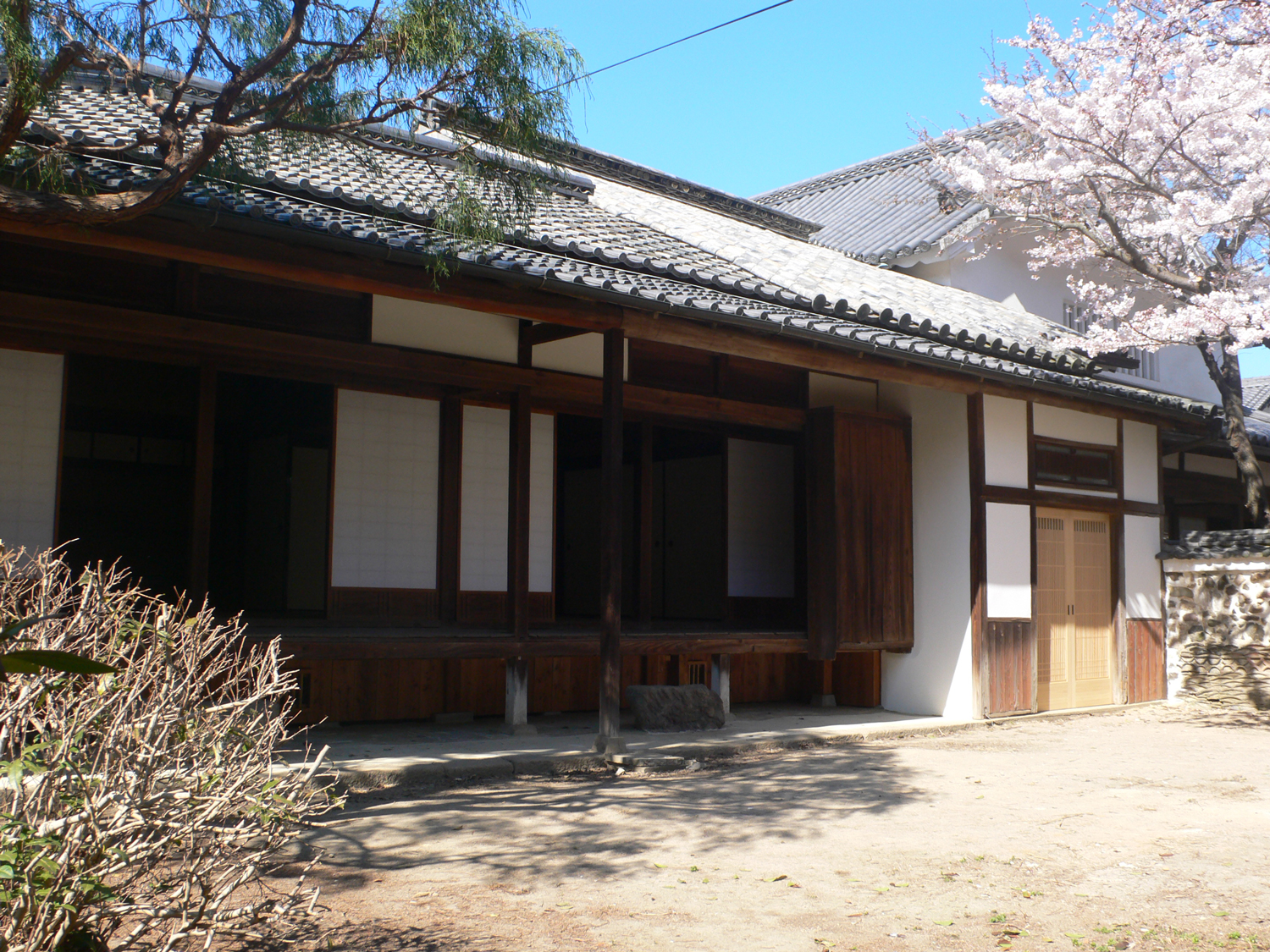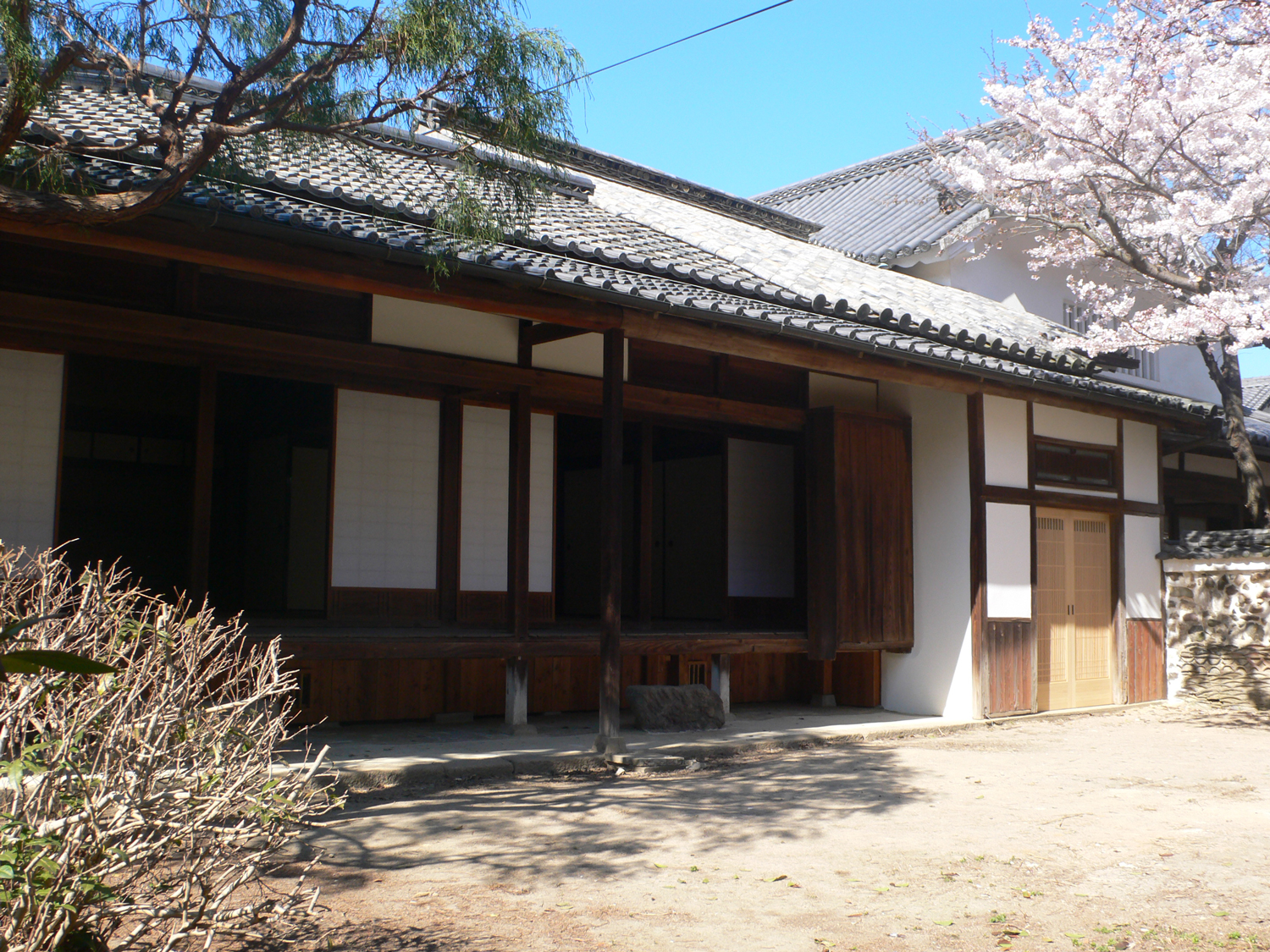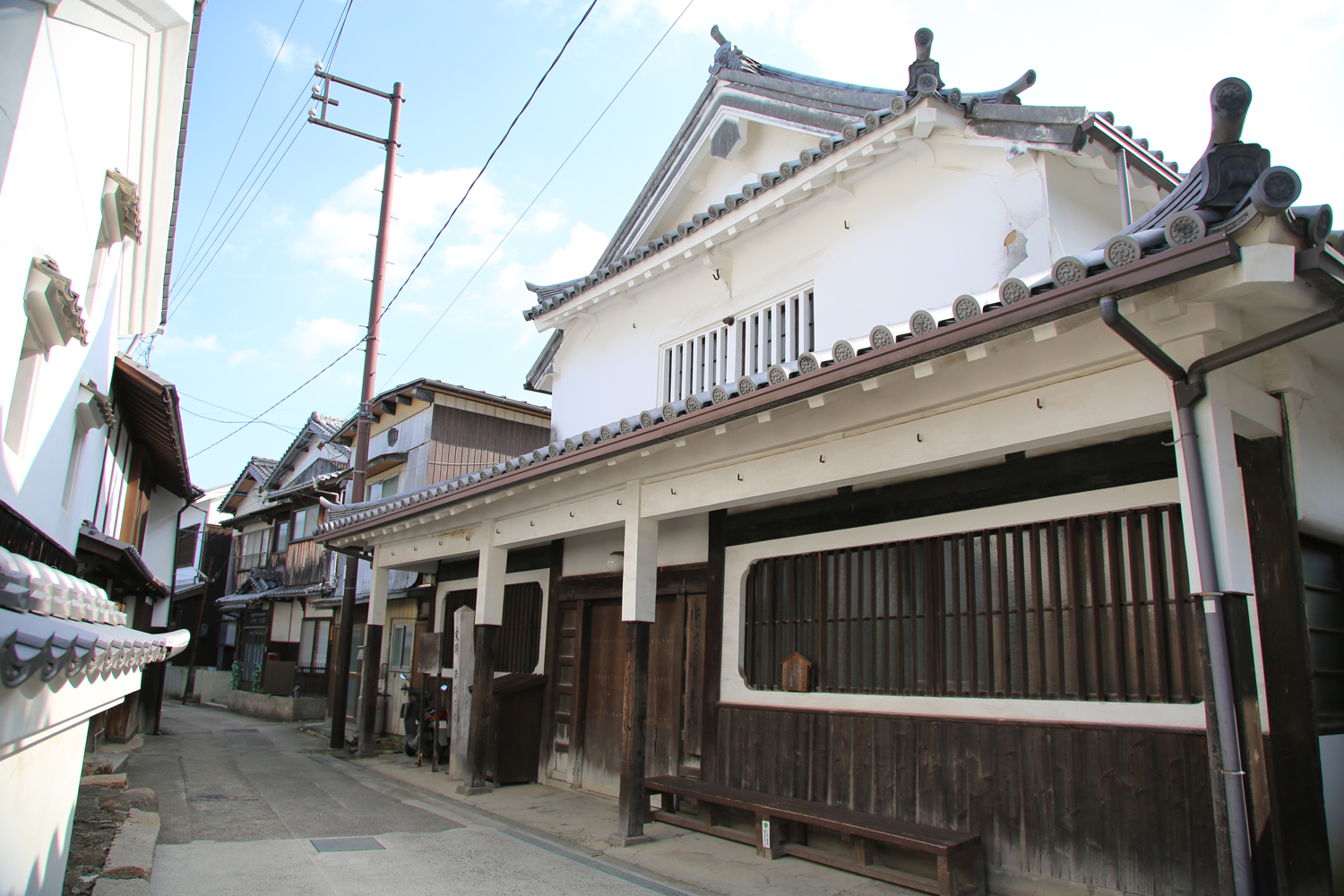若胡子屋跡 Wakaebisuya Teahouse
若胡子屋は、江戸時代に御手洗で営業していた4つの主要な茶屋の中では最大のもので、1724年に建てられたと推定されている。当時の茶屋は、お茶を飲むだけでなく、御手洗に船を停泊させた船乗りや商人を楽しませ、その活躍は御手洗の繁栄した商人文化の象徴とされていた。若胡子屋は御手洗で初めて広島藩から営業許可を受けた茶屋で、最盛期には100人もの遊女や芸妓を雇っていたといわれている。現在、御手洗に現存する唯一の茶屋である。

若胡子屋は、船乗りだけでなく、熊本藩や薩摩藩(現鹿児島県)など各地の大名やオランダ東インド会社関係の外国人旅行者なども訪れる高級店だった。薩摩藩との関係が深いことは、茶屋の材料にも表れている。畳の客間の天井や雨戸には、現鹿児島県屋久島の屋久杉が使われている。屋久杉は、当時屋久島を支配していた薩摩藩が輸出を管理していたため、特別な許可が必要だった。また、若胡子屋の中庭の壁には、遠く離れた鹿児島県の桜島半島の火山灰が飾られている。
京都や江戸の繁華街からは離れているが、この茶屋には高級な花魁(おいらん)がいて、高級な客をもてなしていた。若胡子屋の最上位の遊女(太夫)は、江戸や京都の吉原や島原の花魁に匹敵する刺繍の入ったローブを身にまとい、黒漆の下駄やべっ甲の櫛、金銀のかんざしなどの豪華なアクセサリーを身につけていたという。
若胡子屋の鬼灯とその遊女(神室)にまつわる有名な怪談があります。この話は「お歯黒事件」と呼ばれている。お歯黒とは、鉄の粉を煮酢に溶かしたもので歯を黒くすることである。江戸時代から歯が黒くなることは結婚していることを意味し、若胡子屋の遊女は「一夜の妻」とされていたため、客を迎える前に歯を黒くしていた。ある晩、いくらやってみても、禿はおいらんの歯に液体を付着させることができなかった。お客が来るのを待っているうちに、花魁はしびれを切らした。怒った彼女は、煮えたぎる湯を自分の禿の喉に注いだ。少女は両手に黒い血を吐き始め、壁にもたれかかろうとすると黒い手跡を残した。彼女は間もなく死んだ。それ以来、禿の亡霊は殺した女に付きまとった。また、茶室に雇われていた女性が100人になると、そのうちの一人が不思議なことに死んでしまうため、一度に99人以上の女性が雇われることはなかったと言われている。また、壁の高いところにあった禿の黒い手形は、絵の具では隠せず、今でも見ることができるという説もある。
御手洗の経済が衰退し、茶屋が閉店した後、1884年(明治17年)に仏閣となった。この時に2階部分を撤去して、寺の講堂のスペースを確保した。昭和28年、御手洗行政が建物を入手して改修し、茶屋としての姿に復元した。現在は公共のスペースとなっている。

The Wakaebisuya Teahouse is estimated to have been built in 1724 and was the largest of four main teahouses (chaya) that operated in Mitarai during the Edo period (1603–1867). Far more than a place to drink tea, the teahouses of that time provided food, drink, and entertainment for the sailors and merchants who docked their ships in Mitarai. The success of the teahouses was considered a symbol of Mitarai’s prosperous merchant culture. Wakaebisuya was the first teahouse in Mitarai to receive an official business license from the Hiroshima domain, and it is believed to have employed up to 100 female entertainers at the peak of its success. It is the only teahouse still standing in Mitarai today.
The Wakaebisuya Teahouse was a high-class establishment whose clientele included not only sailors but also daimyo from different regions, such as Kumamoto and Satsuma (now Kagoshima Prefecture), as well as foreign travelers associated with the Dutch East India Company. The teahouse had a close relationship with the Satsuma domain, as evidenced by the materials used in its construction. The ceiling and shutters (amado) of the tatami-floored guest room are built of yakusugi, ancient Japanese cedars taken from the island of Yakushima, in what is now Kagoshima Prefecture. At the time, Yakushima was controlled by the Satsuma domain, who regulated the export of yakusugi and required a special permit to obtain it. Likewise, one wall of Wakaebisuya’s inner garden is decorated with volcanic cinder originating from the distant Sakurajima Peninsula, also located in Kagoshima.

Though distant from the famous red-light districts of Kyoto and Edo (now Tokyo), the teahouse employed high-class courtesans (oiran) for its equally high-class patrons. The top-ranked courtesans, called tayū, were luxuriously attired, dressing in embroidered robes on par with those worn by courtesans in the Yoshiwara and Shimabara districts of Edo and Kyoto, with lavish accessories such as black lacquer geta, tortoiseshell combs, and gold-and-silver hairpins.
The Ohaguro Incident
There is a Japanese ghost story about one of Wakaebisuya’s oiran and her serving girl (kamuro). This story is referred to as the “Ohaguro Incident.” Ohaguro is the practice of blackening one’s teeth with a foul-smelling mixture of iron filings dissolved in boiling vinegar. During the Edo period, blackened teeth indicated that a woman was married, and since the courtesans at Wakaebisuya were considered “wives for a night,” they blackened their teeth before receiving customers. One night, an oiran could not get the liquid to adhere to her teeth no matter how she tried. With customers waiting for her, the oiran grew more and more impatient, and in a rage, she poured the boiling liquid down her serving girl’s throat. The girl began vomiting black blood into her hands, and when she tried to steady herself against the wall, she left a black handprint. She died soon after. From then on, the ghost of the kamuro haunted the woman who had killed her. It is also said that whenever the number of women employed at the teahouse reached 100, one of them would die mysteriously so that there were never more than 99 women working there at a time. Moreover, some claim that the kamuro’s black handprint high on the wall could never be hidden with paint and can still be seen today.
After Mitarai’s economy declined, the teahouse closed, and in 1884 the building became a Buddhist temple. As a result, the second floor was removed to make room for the temple lecture hall. In 1953, the town of Mitarai obtained the building so that it could be renovated and restored to its original appearance as a teahouse. Today, it is a public space.


